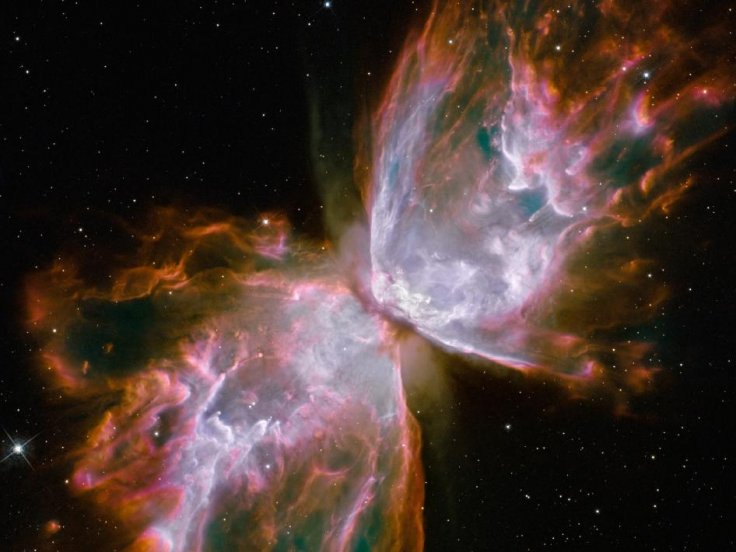The Hubble Space Telescope operated by NASA and the European Space Agency photographed a unique-looking nebula that was formed by a dying star. Due to outbursts from the star, the nebula resembles a giant beautiful butterfly in space.
The massive cosmic structure featured in the photo has been identified as NGC 6302. It is located within the Milky Way galaxy and is about 3,800 light-years from Earth.
NGC 6302's Dying Star

The star that formed the nebula is hidden behind massive clouds of gas, dust and other cosmic debris. According to NASA, this star used to be five times more massive than the Sun before it began using up the rest of its fuel reserves.
As the star ran out of energy, it began to expand and shed its outer layer. The outburst caused by the star created a stunning display of ultraviolet radiation that was captured by Hubble's infrared imaging capabilities. This led to the creation of a planetary nebula, which got its name due to its appearance.
"A dying star that was once about five times the mass of the Sun is at the centre of this fury," NASA explained in a statement. "It has ejected its envelope of gases and is now unleashing a stream of ultraviolet radiation that is making the cast-off material glow. This object is an example of a planetary nebula, so-named because many of them have a round appearance resembling that of a planet when viewed through a small telescope."
Sculpting NGC 6302's Wings
NGC 6302 is characterized by its huge wing-like structures, which is why it has been referred to as the butterfly nebula. As explained by NASA, the "wings" of the nebula were created by the gas that was expelled by the dying central star. Eventually, as the central star's temperature increased, which is currently at 400,000 degrees Fahrenheit, it's hot stellar winds began carving through the surrounding clouds of gas and modified the appearance of the wing-like structures.
"Other gas was ejected perpendicular to the ring at higher speeds, producing the elongated "wings" of the butterfly-shaped structure," NASA stated. "Later, as the central star heated up, a much faster stellar wind, a stream of charged particles travelling at more than 2 million miles an hour, ploughed through the existing wing-shaped structure, further modifying its shape."









